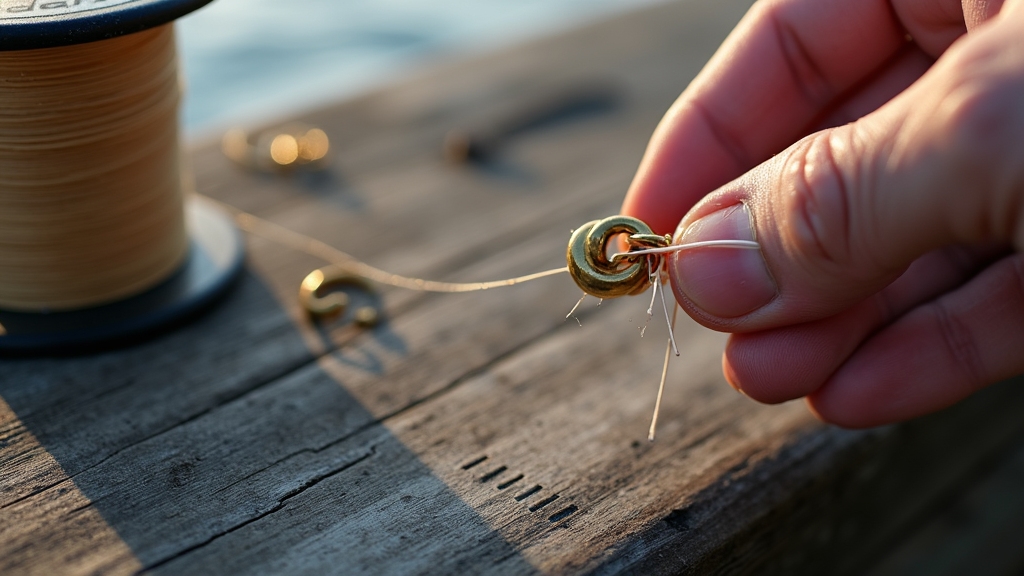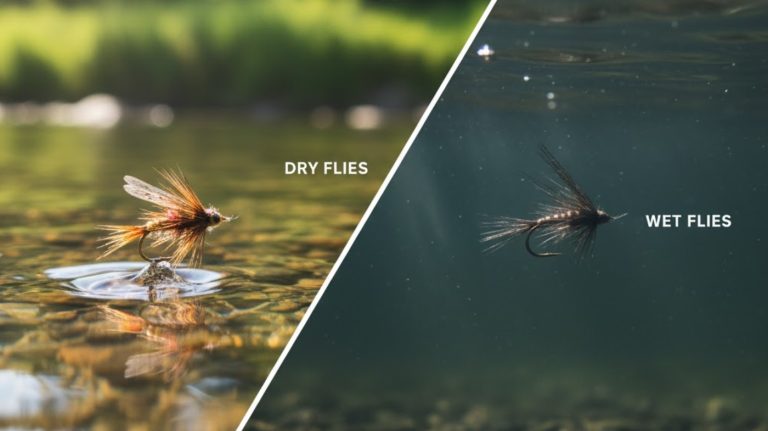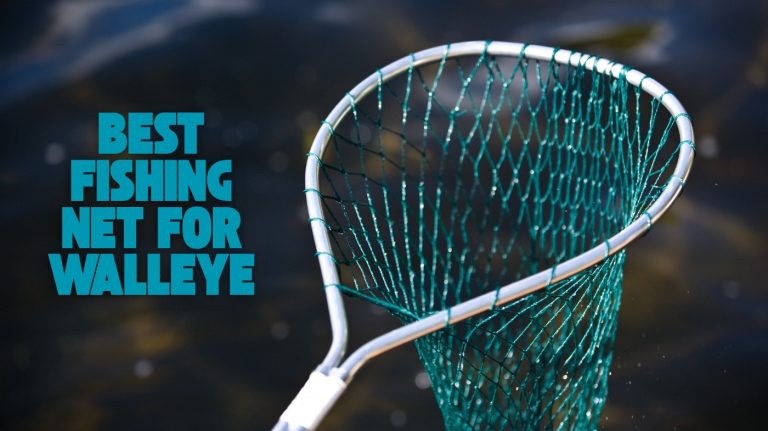What Size Swivel to Use for Fishing: Costing You Big Catches
You should select a swivel size that matches or exceeds your line or leader’s breaking strength to maintain system integrity and avoid failure.
Smaller sizes (12–4) suit finesse freshwater fishing, while larger ones (1/0 and up) fit heavy saltwater applications requiring corrosion resistance and higher load capacity.
Also, consider your fishing technique and environment to balance durability, visibility, and lure action. Understanding these factors will help you optimize your swivel choice for specific conditions.
Key Takeaways
- Select swivel size based on line or leader breaking strength, ensuring swivel rating meets or exceeds line strength for safety and durability.
- Use smaller swivels (sizes 12–4) for freshwater finesse fishing; larger sizes (1/0–6) suit heavy saltwater or trolling applications.
- Choose corrosion-resistant materials like stainless steel or nickel-chrome plating for saltwater to prevent rust and maintain strength.
- Match swivel type to fishing technique: ball-bearing swivels for high rotation, barrel swivels for cost-efficiency, and snap swivels for quick lure changes.
- Measure swivel diameter precisely from kingpin center to wheel edge to ensure smooth rotation and proper fit in rigs or furniture.
Understanding Swivel Sizes and Strength Ratings
While swivel sizes might seem straightforward at first, understanding their standardized scale and corresponding strength ratings is essential for selecting the right swivel for your fishing needs. Choosing appropriate components, such as line and swivels, ensures optimal fishing performance.
Swivels follow a size scale starting at 12, increasing to 1, then shifting to aught sizes from 1/0 up to 12/0. With physical dimensions shrinking as numerical size increases.
Smaller swivels (sizes 12 to 1) suit light-duty fishing, while larger aught sizes (1/0 and above) handle heavy-duty saltwater applications. Commercial fishing swivels provide various load capacities suited for different applications, ensuring appropriate use across fishing environments.
Breaking strain correlates directly with size: size 12 swivels manage about 20 pounds, while size 1/0 swivels withstand around 130 pounds. Note that load ratings operate at 20–30% of breaking strain, ensuring safety margins.
Barrel and rolling swivels differ slightly in strength and construction, influencing performance under load. For example, ball bearing swivels are available with high working load limits, often exceeding 400 lbs, making them suitable for demanding tasks.
Choosing Swivel Sizes for Different Fishing Techniques
When selecting swivel sizes for different fishing techniques, you must consider the target species, line strength, and lure action to optimize performance.
For bass fishing, sizes 2 to 4 maintain lure action and reduce line twist. Sizes 4 to 6 provide extra strength for trophy bass and heavy tackle. Using the appropriate swivel also helps to prevent line twist, which is crucial for maintaining line integrity.
Trout and panfish require smaller swivels, typically size 8 to 12, to minimize visibility and preserve subtle presentations.
In saltwater and offshore scenarios, larger swivels from 1/0 to 12/0 handle heavy lines and big game fish, with ball-bearing swivels preferred for trolling.
Trolling and heavy-duty setups often use swivels sized 1/0 to 6, slightly heavier than the leader for durability. For finesse and stealth, use sizes 10 to 12 to reduce spooking and maintain delicate lure action.
Matching Swivel Size to Line Weight and Leader Strength
Selecting the appropriate swivel size goes beyond matching it to your fishing technique; it demands careful alignment with the line weight and leader strength to maintain system integrity.
Proper maintenance and care, including regular inspection and cleaning, help extend the lifespan of your swivels and prevent failure due to corrosion or wear, supporting sustainable gear use.
Your swivel’s pound-test rating must meet or exceed the leader’s breaking strength, as the swivel should never be the rig’s weakest link. For example, a 50 lb leader requires at least a 50 lb-rated swivel, regardless of the main line rating.
Oversized swivels add unnecessary bulk, while undersized ones risk failure. Choosing a swivel made from stainless steel or brass can also influence durability and corrosion resistance, especially in different fishing environments.
| Swivel Size | Line Weight (lb) | Leader Strength (lb) |
|---|---|---|
| #10–#8 | 10–20 | ≤ 20 |
| #6–#4 | 20–40 | ≤ 40 |
| #2–#1 | 40–80 | ≤ 80 |
Match swivel size precisely to leader strength for suitable performance.
Selecting the Right Type of Swivel for Your Rig
Because the type of swivel you choose directly impacts your rig’s performance, understanding the specific designs and their applications is essential.
Barrel swivels offer a cost-effective option for light to medium use but lack the rotational efficiency needed for high-twist scenarios. They are often less effective at preventing line twist compared to other types of swivels, which can be a crucial consideration for certain fishing techniques.
Early morning conditions that stimulate fish activity can also influence the choice of swivel to optimize lure presentation during peak feeding times.
For high-performance demands, ball-bearing swivels provide superior rotation and durability, excelling under heavy loads and with high-rotation lures. Rolling swivels combine strength and spin capacity, suitable for heavy loads, live bait, and offshore conditions.
Three-way swivels enhance rig complexity by allowing multiple attachments, beneficial for trolling but add weight and bulk. Snap swivels facilitate quick lure changes without line retying, ensuring maximum efficiency.
Selecting the right swivel type based on your fishing technique and load requirements guarantees excellent rig functionality and reduces failure risk. Additionally, choosing the right size is important to avoid spooking fish, especially in clear waters, where factors like circadian rhythms can influence fish responsiveness to your rig.
Environmental Factors Affecting Swivel Size Selection
When you’re picking out the right swivel size, it’s important to think about whether you’re fishing in saltwater or freshwater. You see, saltwater can be pretty harsh, and that’s where corrosion resistance becomes a game changer.
You’ll want to go for swivels made from materials that can withstand that kind of environment—think stainless steel or specially treated metals. They really hold up better over time.
Additionally, selecting materials based on corrosion resistance ensures longer life expectancy and reliable performance in tough conditions. Moreover, choosing components with good impact resistance can help prevent damage during active fishing sessions.
Now, here’s something to keep in mind: opting for a larger or heavier-duty swivel can make a difference, too. It can help you fight against the faster wear and tear that saltwater can cause. So, don’t skimp on quality when you’re gearing up for your next fishing trip!
Saltwater vs Freshwater
Although saltwater and freshwater environments both require reliable swivels, their differing physical conditions demand distinct size considerations.
Saltwater’s higher density increases drag and pressure, requiring swivels with greater tensile strength and larger sizes to withstand stronger currents and bigger fish. Using corrosion-resistant materials like stainless steel is crucial in saltwater to prevent swivel degradation and ensure longevity.
You’ll often match saltwater swivels to line ratings of 40-150+ lbs, using robust designs like ball-bearing swivels to maintain rotation under heavy loads. Conversely, freshwater imposes less mechanical strain, allowing you to use smaller swivels rated for 10-80 lbs that reduce visibility and preserve lure action.
Freshwater swivels prioritize finesse and minimize line twist without sacrificing strength. Selecting swivel size depends on balancing water density, target species strength, and load requirements to ensure ideal performance and durability in each environment.
Corrosion Resistance Needs
In corrosive settings like salt spray or chemical exposure, you need larger swivels with thicker cross-sections and high-grade coatings, such as nickel or chrome plating, stainless steel, or treated alloys. These materials help withstand accelerated degradation.
Selecting the right material is crucial since corrosion-resistant materials like stainless steel or nickel-chrome plated brass ensure longevity in harsh environments. Smaller swivels offer less surface for protective layers, demanding more frequent maintenance.
Humidity, temperature shifts, and abrasive particles intensify corrosion, so your swivel must balance corrosion resistance with load capacity. Incorporating durable construction principles similar to those used in outdoor gear enhances the swivel’s lifespan in challenging conditions.
Internal lubrication and precise seal designs prevent rust and contamination, which are essential for durability. Plastics like acetal resist UV and moisture, but require size consideration to maintain strength.
Ultimately, select a swivel size that supports heavier corrosion-resistant materials and coatings. This ensures operational longevity without compromising mechanical performance in harsh environments.
Practical Tips for Picking the Ideal Swivel Size
Since selecting the ideal swivel size directly impacts the clearance needed for smooth 360-degree rotation, you must measure the swivel diameter accurately.
Lay the caster on its side, then measure from the kingpin center to the wheel’s back edge.
Use a straight edge against the wheel face to pinpoint the precise measurement point.
The tape measure intersection with the straight edge provides the final swivel diameter.
This guarantees you allocate sufficient clearance, preventing binding or restricted rotation. Using proper technique when measuring ensures consistency and accuracy.
When integrating swivels into seating, consider standard armchair widths (26–40 inches) and seat heights (16–19 inches) to balance stability and comfort.
Matching swivel size to these dimensions avoids interference with armrests or frame components.
Precision in measurement and alignment guarantees optimal swivel function and user experience in furniture design.
Additionally, overall height & dimensions should be measured from the bottom of the wheel to the top of the chair mechanism to ensure complete compatibility with existing furniture.
Frequently Asked Questions
Can I Repaint or Customize My Swivels for Better Camouflage?
Yes, you can repaint or customize your swivels for better camouflage. Use durable, weather-resistant paints with matte finishes to reduce glare.
Apply multiple thin coats using sponging or airbrush techniques for natural patterns matching your environment. Avoid painting internal moving parts to maintain functionality.
Regularly inspect and reapply paint as needed, and seal with clear coats to prolong durability. Proper preparation and maintenance guarantee effective, lasting camouflage on your swivels.
How Often Should Swivels Be Replaced to Maintain Strength?
You should replace your swivels based on their operating environment and condition.
In saltwater, replace stainless steel swivels every five years to prevent corrosion-related failures.
For severe conditions like high temperatures, heavy loads, or chemical exposure, schedule more frequent replacements.
Monitor wear indicators such as pitting, erosion, and increased torque.
Implement a maintenance plan with regular inspections and lubrication to detect degradation early and maintain peak strength and safety.
Are Swivel Size Standards Consistent Across All Fishing Brands?
No, swivel size standards aren’t perfectly consistent across all fishing brands.
While most follow an aught scale where smaller numbers mean larger swivels, dimensions and breaking strengths vary.
For example, a size 1 swivel from one brand might handle 100 lbs, another 175 lbs.
You’ll find slight differences in length, eye diameter, and material too.
Always check specific brand charts to match swivel size and strength precisely to your fishing line and conditions.
Do Swivel Sizes Affect the Casting Distance of My Lure?
Casting distance can definitely feel the weight of your swivel choice. If you use a swivel that’s too large or heavy, it creates extra drag and friction, cutting your lure’s flight shorter.
Conversely, a smaller swivel reduces drag but mightn’t handle heavy loads well.
For peak performance, match swivel size closely to your leader line strength. This balances durability with minimal drag, optimizing casting distance and lure presentation.
Can Swivels Be Safely Reused After Catching Large Fish?
You can reuse swivels after catching large fish only if they’re rated for heavy loads and show no visible damage like bent shafts or corrosion.
Inspect bearings for smooth rotation and check for metal fatigue carefully. However, it’s safer to replace swivels after trophy catches to avoid failure risks.
High-quality, heavy-duty swivels withstand stress better, but repeated strain, especially in saltwater, degrades performance.
Always prioritize reliability over reuse convenience.
Stop Losing Fish: Choose the Right Swivel Every Time
When selecting a swivel, remember that 85% of fishing failures stem from improper size matching. You’ll need to balance line weight, leader strength, and technique to optimize performance.
Using an undersized swivel risks breakage, while an oversized one may hinder natural bait movement. By analyzing strength ratings and environmental factors, you can confidently pick the right swivel size that guarantees durability and efficiency.
Ultimately, this will improve your overall fishing success.







